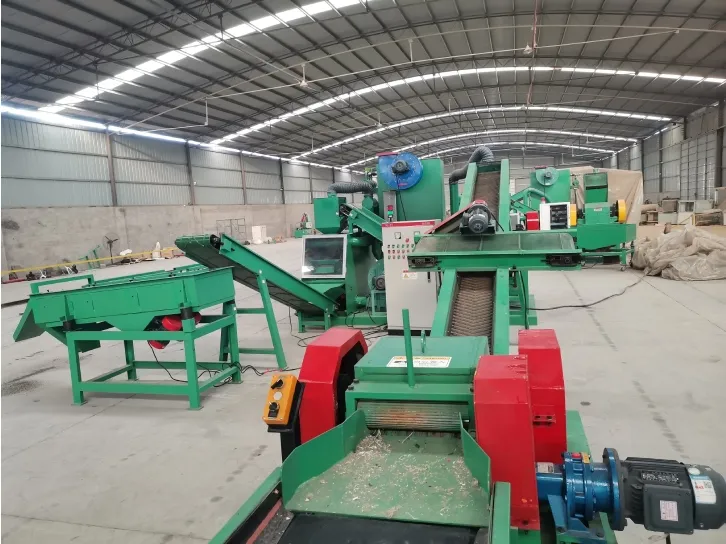

Eyl . 15, 2024 21:54 Back to list
How Does a Granulator Work?
Granulators are essential machines in various industries, including plastics, pharmaceuticals, and food processing. Their primary function is to break down large materials into smaller, more manageable granules or particles. Understanding how granulators work can provide insights into their importance in manufacturing processes.
At its core, a granulator operates by utilizing mechanical force to crush, shear, and reduce materials into desired sizes. The process typically begins with the raw material being fed into the granulator through an in-feed system. This can be done manually or automatically, depending on the design of the machine and the needs of the application.
How Does a Granulator Work?
The granulator is equipped with a screen or filter that governs the size of the granules produced. This screen has specific openings that allow only materials of a certain size to pass through. Once the material is reduced to the desired granule size, it falls through the screen, while larger pieces continue to be processed until they meet the size requirements. This process ensures a consistent and uniform granule size, which is crucial for subsequent processing steps.

In addition to mechanical size reduction, some granulators may incorporate other functionalities, such as drying or cooling, depending on the application. For example, in the pharmaceutical industry, where moisture content can affect product quality, granulators may feature integrated drying systems to remove excess moisture during the granulation process.
Granulators can be categorized into different types based on their design and the principles of operation. For instance, the two main types are rotary granulators, which utilize high-speed rotation, and centrifugal granulators, which use centrifugal force to achieve size reduction. Each type is suited for specific materials and applications, allowing for versatility in various industrial settings.
Maintenance is a crucial aspect of ensuring the efficiency and longevity of a granulator. Regular inspection of blades for wear and tear, cleaning of screens, and lubrication of moving parts are essential to maintaining optimal performance. A well-maintained granulator not only operates more efficiently but also reduces the risk of contamination or product inconsistency.
In conclusion, granulators play a vital role in converting bulk materials into uniform granules, which are easier to handle, transport, and process. Through mechanical force and a careful balance of design features, these machines ensure that the final product meets specific industry standards. As technology continues to advance, so too will the capabilities of granulators, enabling industries to enhance their manufacturing processes and improve product quality. Understanding how these machines work is key to appreciating their significance in modern production environments.
Latest news
Troubleshooting Common Eddy Separator Problems
NewsJul.04,2025
The Role of Metal Recycling Plants in Circular Economy
NewsJul.04,2025
The Impact of Recycling Line Pickers on Waste Management Costs
NewsJul.04,2025
Safety Features Every Metal Shredder Should Have
NewsJul.04,2025
How Industrial Shredders Improve Waste Management Systems
NewsJul.04,2025
How Cable Granulators Contribute to Sustainable Recycling
NewsJul.04,2025